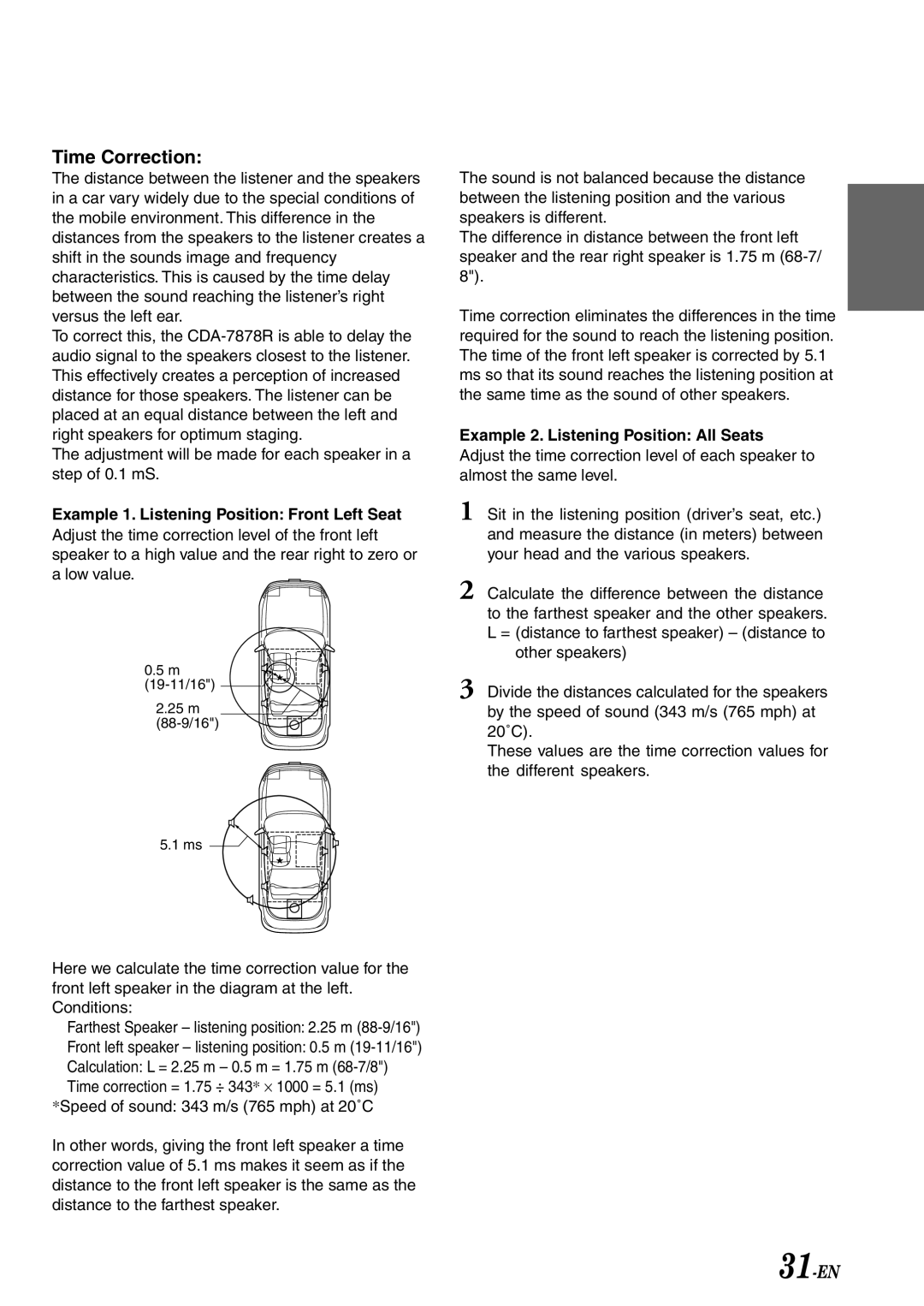
Time Correction:
The distance between the listener and the speakers in a car vary widely due to the special conditions of the mobile environment. This difference in the distances from the speakers to the listener creates a shift in the sounds image and frequency characteristics. This is caused by the time delay between the sound reaching the listener’s right versus the left ear.
To correct this, the
The adjustment will be made for each speaker in a step of 0.1 mS.
Example 1. Listening Position: Front Left Seat
Adjust the time correction level of the front left speaker to a high value and the rear right to zero or a low value.
0.5 m
2.25 m
5.1 ms
Here we calculate the time correction value for the front left speaker in the diagram at the left. Conditions:
Farthest Speaker – listening position: 2.25 m
Front left speaker – listening position: 0.5 m
Calculation: L = 2.25 m – 0.5 m = 1.75 m
*Speed of sound: 343 m/s (765 mph) at 20˚C
In other words, giving the front left speaker a time correction value of 5.1 ms makes it seem as if the distance to the front left speaker is the same as the distance to the farthest speaker.
The sound is not balanced because the distance between the listening position and the various speakers is different.
The difference in distance between the front left speaker and the rear right speaker is 1.75 m
Time correction eliminates the differences in the time required for the sound to reach the listening position. The time of the front left speaker is corrected by 5.1 ms so that its sound reaches the listening position at the same time as the sound of other speakers.
Example 2. Listening Position: All Seats
Adjust the time correction level of each speaker to almost the same level.
1 Sit in the listening position (driver’s seat, etc.) and measure the distance (in meters) between your head and the various speakers.
2 Calculate the difference between the distance to the farthest speaker and the other speakers. L = (distance to farthest speaker) – (distance to
other speakers)
3 Divide the distances calculated for the speakers by the speed of sound (343 m/s (765 mph) at 20˚C).
These values are the time correction values for the different speakers.
